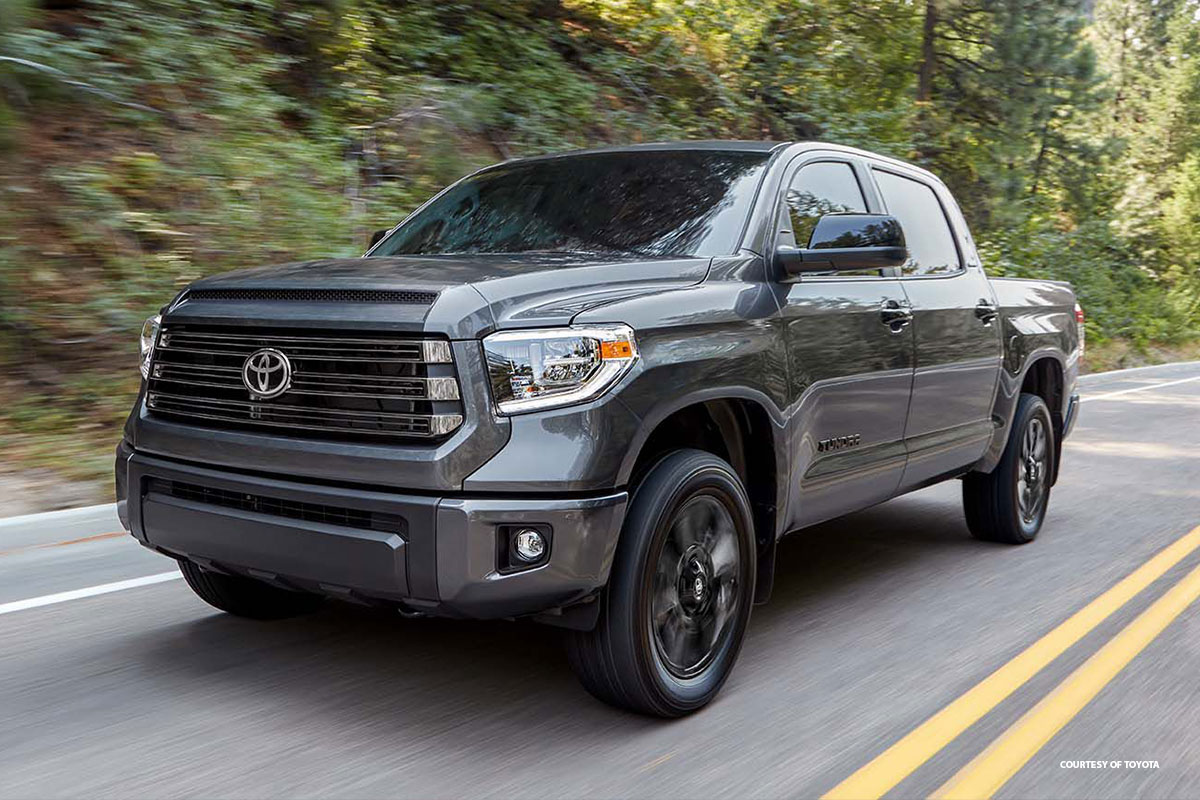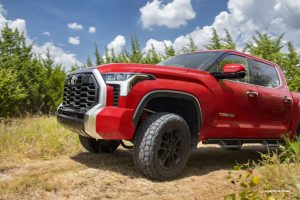A leveling kit, or front-end lift kit, is a smart addition to a Toyota truck, like the Tundra. It lifts the front part of the vehicle’s body several inches. That’s helpful for driving off-road, towing, or for fitting larger tires. Unfortunately, installing leveling kits isn’t always a smooth process. It can be problematic, leaving Toyota Tundra owners with issues to fix.
This guide will look at some of the common leveling kit issues you might encounter, and how to solve them.
Contents
Common Problems with Toyota Tundra Leveling Kits
Let’s begin with the common problems you might notice after installing a leveling kit. Some of these issues are less serious than others, but they’re all frustrating and potentially expensive to deal with.
Rapid Tire Wear
This is one of the most common issues that Tundra and other truck owners report after fitting a leveling kit. They notice that the tires, especially the front tires, start wearing down way faster than before. The outer sections of the treads, in particular, might wear down rapidly. This is usually because the tires haven’t been correctly aligned.
Shakes and Vibrations
Toyota Tundra owners might also encounter random shudders, shakes, and vibrations while driving their trucks after using a leveling kit. Most notably, your Tundra might shake or judder a lot when you accelerate to high speeds on the highway. This can be both unpleasant and worrying for drivers to deal with.
Poor Mileage
Some Tundra owners have also reported their mileage getting worse after installing a leveling kit. This is usually easy to notice. You’ll have to fill the tank more regularly than before and won’t seem to get as far as you once did with a full tank of gas. There are several possible explanations, such as improper kit installation or poor tire alignment.
Strange Sounds While Shifting
Listen out for any strange noises after adding a leveling kit to your Tundra. Some drivers have reported an array of sounds, like clunking or metallic knocking noises. More often than not, a faulty driveshaft is the culprit, which is linked to improper leveling kit installation. If you ignore the sounds, the problem will likely get worse over time.
Failing Suspension
This is one of the worst possible outcomes after a leveling kit installation. Tundra owners may find that their truck’s suspension systems suffer from a range of faults and failures. Components may also come loose or break entirely, potentially making your Tundra inoperable and unsafe to drive.
Solutions for Tundra Leveling Kit Problems
Clearly, there are quite a few issues for Tundra owners to watch out for when fitting a leveling kit. Some of which can lead to hazards and costly repairs, but you can take steps to avoid all of that.
Use a Trusted, High Quality Kit
First, make sure you use a good quality leveling kit. There are lots of options to choose from, and they’re not all made equal. It might be tempting to buy a more affordable kit from a brand you’ve never heard of. But that’s usually a mistake. Poor quality kits are more likely to cause problems and damage to your truck. Pay a little extra and buy from a reputable, recognized brand.
Inspect the Kit Before Installation and Measure Your Truck
First, before installing a leveling kit, inspect it closely. Look at each part for any damage or irregularity. Even kits from trusted brands sometimes come with minor defects. If the kit doesn’t look quite right, don’t proceed with the installation. Get a replacement kit instead. Additionally, use this time to measure your car. Check the height difference between the front and back ends.
Install Your Kit Correctly
The vast majority of leveling kit problems are caused by improper installation. If any of the parts aren’t fitted correctly, you will likely experience issues. So, make sure you fit the kit correctly. You can do it yourself, if you’ve got the tools and experience to do so. Just make sure to follow the instructions carefully and take your time. If you don’t feel confident, ask a pro to help.
Align the Tires
Post-installation, it’s strongly recommended to have your tires aligned. Ideally, you’ll want to do this as soon as possible. Preferably in the first 24-48 hours after fitting the kit, and definitely before any long drives. This process adjusts the vehicle’s suspension to match the new position of the body, setting the angle of the tires accordingly. It’s useful for minimizing the risks of tread wear or other issues, like your truck drifting to one side while you drive. Try to get it done as soon as you can.
Invest in New Shocks
Installing a leveling kit will have an impact on your truck’s suspension. If your vehicle is quite old, or you do a lot of offroading and towing, your suspension may have suffered a lot of wear and tear already. For that reason, it’s also a good idea to consider some fresh shock absorbers when installing a leveling kit. This should help to reduce the risk of any unwanted suspension side effects.
FAQ
Are leveling kits worth it for a Toyota Tundra?
Given the potential problems listed above, you may wonder if a leveling kit is worth installing. It all depends on how you intend to use your Tundra. If you do a lot of towing or off-roading, a leveling kit is almost a necessity. It’s also a good idea to consider a leveling kit if you want to fit bigger tires to your Tundra. But if none of that applies, you may be better off leaving your Tundra as it is.
Install Your Leveling Kit Correctly to Reduce the Risk of Problems
Ultimately, a leveling kit is a useful and necessary investment for many Tundra owners. But you have to install it correctly if you want to avoid a wide range of pesky problems. Remember to choose a good quality product and install it with great care. If you still have issues after fitting your kit, local mechanics or dealership technicians should be able to help you.


